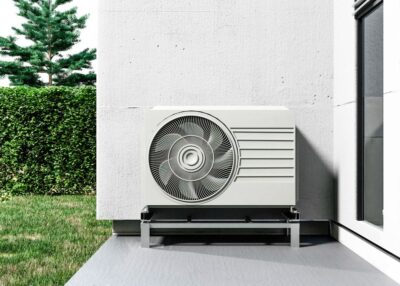It’s either too cold or too hot when you get home, no matter what setting you use for the temperature. Everyone is having this problem. These old HVAC systems just can’t keep up anymore — summers are longer and hotter, while winters have become unpredictable. With the weather changing so much, it’s time to rethink how we keep our homes comfortable year-round. Now is the day to do the right thing, like saving energy in cheap, green ways.
Right in the heart of places like Silicon Valley, where the sun doesn’t mess around, folks are turning to local help for HVAC Santa Clara needs. Fuse Service steps in with practical HVAC solutions that fit right into these shifting demands, making sure your home stays comfortable without the drama.
Climate Change Is Reshaping Comfort Needs
You are aware in your heart that life is really challenging because of these constant heat waves. The data shows it’s messing with our weather patterns, and yeah, that’s hitting us right where we live. With temps climbing higher, we’ll all be cranking up the AC way more next summer. Sure, those milder winters give us a nice break on heating bills for a bit, but don’t get too comfy — cooling needs are about to spike hard, especially up north, says the New York State Energy Research and Development Authority. According to the U.S. EPA, this increased reliance on air conditioning may backfire and pollute the air we breathe even more.
Then there’s the humidity factor, which turns sticky summers into outright misery. Older HVAC systems fight it but often lose, leaving rooms damp and prone to mold or that nagging allergy itch. The EPA points to how warmer weather could stir up more indoor nasties, like bacteria lurking in your vents. So, our heating and cooling needs have changed. We need more than just air conditioning now; we need systems that also deal with moisture and quality to keep our houses safe in a world that is anything but predictable.
The Energy Burden of Traditional Systems
Let’s be honest about the bad HVAC systems we had growing up that used up power like there was no tomorrow. According to the U.S. Energy Information Administration, they used around 8% of all U.S. electricity in 2018, which is a huge amount: 76 billion kilowatt-hours. In your average home, heating and cooling swallow more than half the energy bill, no joke.
Part of the problem? Those inefficient compressors and fans that run full tilt, wasting heat and straining the grid. In cities, it gets worse; the exhaust from these units actually warms up the neighborhood, feeding right back into the urban heat trap. We’re talking about utility costs that easily reach four figures and a carbon footprint that’s hard to ignore. It’s annoying, isn’t it? But getting rid of the old for something sharper isn’t just good for the environment; it’s also good for your money in the long run.
Smarter Systems for a Smarter Climate Response
What if your HVAC could plan ahead, like a friend who knows when you’re running late? That’s what makes today’s smart HVAC systems so great. For example, the ENERGY STAR smart thermostats learn your patterns and turn down the heat and air conditioning when you’re not home. This saves you 10–15% on your heating and cooling expenditures without you having to do anything. If you give them sensors that detect who’s home or how fresh the air is, you can avoid peak-hour spikes that raise rates.
These aren’t just tricks; they’re made to handle the crazy conditions we have. Heat pumps with variable speeds handle the humidity beast better, and you can tweak everything from your phone while stuck in traffic. Quieter, slicker, and way more in tune with Mother Nature’s moods, it’s the kind of upgrade that makes you wonder why we waited so long.
The Human Side of Smarter HVAC Choices
At the end of the day, it’s not all about watts and SEER ratings; it’s about feeling good in your own skin. A solid HVAC system doesn’t just regulate temp; it clears the air, literally. Did you know the EPA says indoor pollutants can be way worse than outside? But good ventilation flushes ’em out, cutting down on stuffy noses or worse. Just imagine there were fewer coughs at the dinner table and that the kids slept through the night. Allergens are caught by fancy screens before they settle, and mold stays away thanks to steady humidity, which is great for places that get really humid. Plus, no more battling hot upstairs bedrooms or chilly corners; it’s even comfort that lets you relax. These systems turn houses into homes that actually care for you, one breath at a time.
Preparing for Tomorrow’s Standards Today
The rules are catching up, and thank goodness. By 2025, the Department of Energy is cranking up efficiency bars: central AC split systems need a SEER2 of at least 17 and an EER2 of 12 to snag those sweet tax credits. Up north, it’s 14 minimum; down south, 15 — tailored to where the heat hits hardest.
Jump in now, and you’re looking at billions in collective savings, plus up to $3,200 back from Uncle Sam for heat pumps and the like. Skip the last-minute rush, grab an audit, chase those rebates, and future-proof your setup. It’s less hassle than you think, and the payoff? Priceless.
In Conclusion
Climate change is already reshaping what we need from our HVAC systems, so it’s time to step up. The upside? Modern HVAC technology lets us fight back smartly — cutting waste, improving indoor air quality, and keeping up with new standards. Talk to an expert, check your current setup, and make the upgrade. You’ll rest easier knowing you’re making a difference.
View the original article and our Inspiration here


Leave a Reply